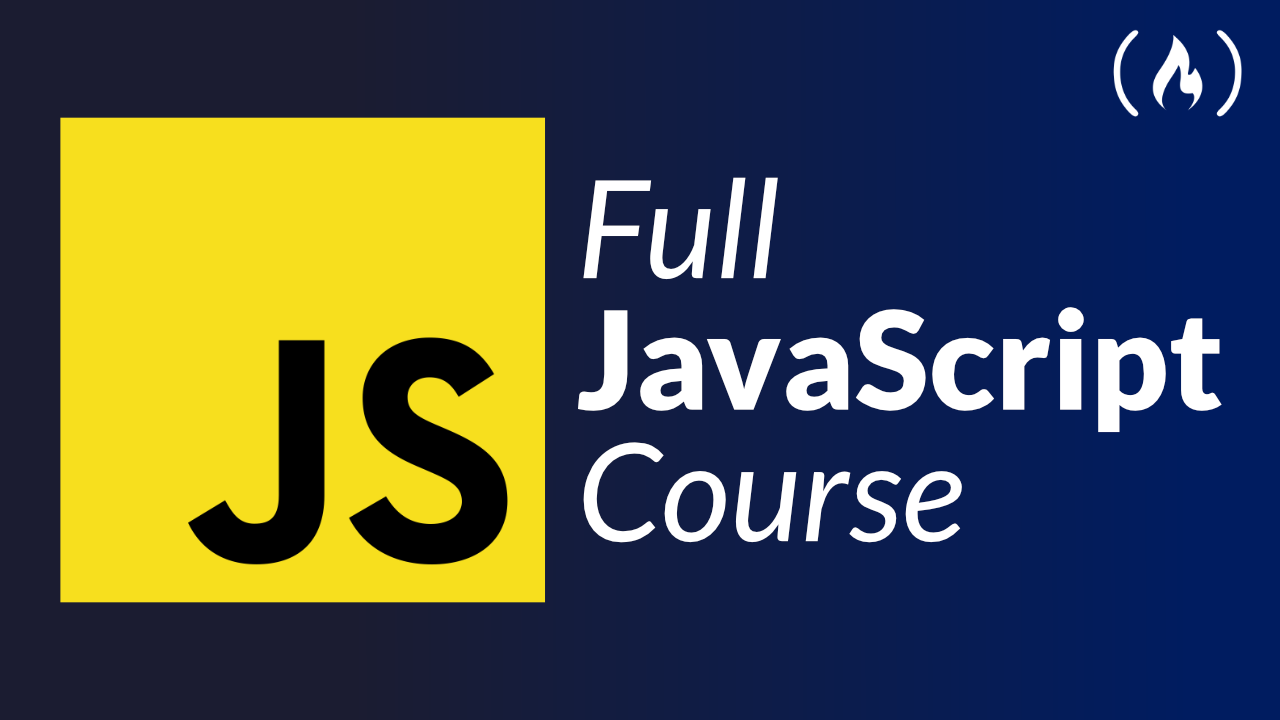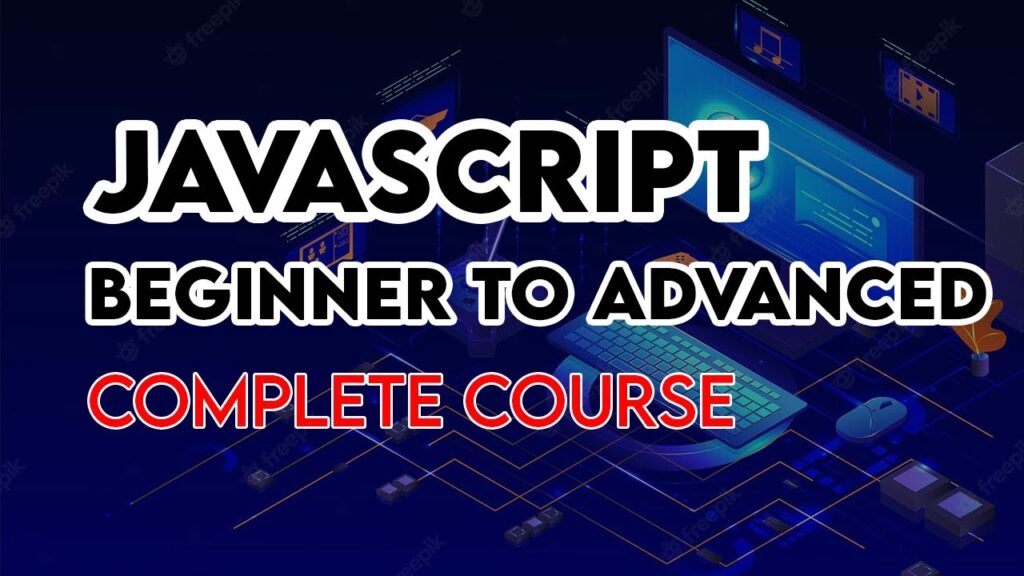You know that feeling when you look at something incredibly complex, something that seems like pure magic, and think, "There’s no way I could ever understand that"? That’s exactly how I felt about coding, especially web development, just a few years ago. Websites, apps, all those interactive buttons and animations – it all seemed so far beyond my grasp. Then, I stumbled upon JavaScript, and more importantly, the right JavaScript course, and my world started to make sense.
This isn’t some super-techy breakdown; this is my story, from someone who thought "if statements" were just a weird way of talking, to someone who now builds stuff that actually works. If you’re standing at the edge of the coding world, feeling a bit intimidated, trust me, I’ve been there. And I’m here to tell you how a good JavaScript course changed everything for me.
The "Before": Lost in a Sea of Code
Before I even considered a JavaScript course, my understanding of how websites worked was, well, minimal. I knew HTML was for content, CSS made it look pretty. But how did buttons do things? How did forms send information? How did pages change without reloading? It was a mystery wrapped in an enigma, probably secured with a digital padlock I couldn’t pick.
I’d tried to learn a few times, usually by just watching random videos or reading technical blogs. The problem was, they often jumped straight into concepts I didn’t grasp, or used jargon that went right over my head. I’d end up more confused than when I started, convinced that coding was for people with a special "tech brain" I clearly didn’t possess. My motivation would fizzle out, and I’d go back to just being a passive user of the internet, wishing I could create something of my own.
My turning point came when a friend, who’d recently landed a job in web development, told me, "You just need a good JavaScript course. Something structured, that explains things from zero." He emphasized JavaScript because, as he put it, "It’s everywhere. If you want to make websites interactive, or even build apps, it’s your key."
My First Steps: What a Good JavaScript Course Taught Me
So, I started looking for a JavaScript course. Not just any course, but one that promised to be beginner-friendly. I wanted something that held my hand, metaphorically speaking, through the initial confusion.
And boy, did it deliver.
The A-B-Cs of JavaScript
My chosen JavaScript course didn’t rush. It started with the absolute basics, like:
- Variables: Imagine a little box where you can store information. My instructor explained it as "a label for a value." Simple, right? Suddenly,
let myName = "Alice";made sense. - Data Types: Numbers, text (strings), true/false (booleans). These were the fundamental building blocks, and understanding them was like learning the basic shapes before drawing a masterpiece.
- Operators: How to add, subtract, compare things.
10 + 5was obvious, but==versus===was a revelation! (Turns out, the triple equals is often better for checking if things are really the same). - Functions: This was a big one. My course described functions as "mini-programs" or "recipes" you can write once and use many times.
function greet(name) console.log("Hello, " + name);became my first real piece of reusable code, and seeing "Hello, Alice!" pop up in the console was a tiny spark of understanding that grew into a fire.
These were the things that often got glossed over in other resources, but my JavaScript course spent proper time on them. It felt like learning a new language, starting with individual words and simple sentences before trying to write a novel.
The "Aha!" Moments: Building My First Interactive Bits
The real magic started when the JavaScript course introduced me to the Document Object Model (DOM). This is basically JavaScript’s way of talking to your website’s HTML. Suddenly, that static webpage wasn’t so static anymore!
- I learned how to select elements on a page (like a button or a paragraph).
- I learned how to change their text or their style.
- Most excitingly, I learned how to listen for events – like someone clicking a button!
My first mini-project was a simple button that changed the background color of the page. It sounds trivial, but for me, it was monumental. I had made something interactive. I had written code that did something visible. The sheer joy and sense of accomplishment were incredible.
My JavaScript course then guided me through building a small counter, a basic to-do list where you could add and remove items, and even a simple calculator. Each project was carefully designed to reinforce concepts and introduce new ones, building my skills step-by-step. The frustration of debugging (finding and fixing errors in my code) was real, but the satisfaction of finally making it work was even greater.
What to Look For in Your JavaScript Course
If my story resonates with you, and you’re thinking about starting your own coding journey, here’s what made my JavaScript course so effective, and what I recommend you look for:
- Beginner-Friendly Explanations: This is paramount. Does the instructor break down complex ideas into simple analogies? Do they explain why things work, not just how? Avoid courses that assume prior knowledge.
- Hands-On Projects: Reading about code is one thing; writing it is another. A good JavaScript course will have you coding regularly, building small projects that help solidify your understanding. These practical exercises are where you truly learn.
- Clear Structure and Pacing: A well-organized course takes you from point A to point B without overwhelming you. It introduces concepts logically, building one skill upon another.
- Up-to-Date Content: JavaScript is always evolving. While fundamentals remain, new features and best practices emerge. Look for a course that seems current, covering modern JavaScript (often referred to as ES6+).
- Support and Community (If Possible): Being able to ask questions when you’re stuck, whether it’s through a Q&A section, a forum, or a dedicated community, is incredibly helpful. Learning to code can be lonely, so support makes a big difference.
- Focus on Fundamentals: Before diving into fancy frameworks like React or Vue, ensure the course thoroughly covers core JavaScript. A strong foundation makes learning more advanced topics much easier.
Why JavaScript Still Matters (And Why You Should Learn It)
My JavaScript course didn’t just teach me a language; it opened up a whole new way of thinking. And even after all this time, JavaScript remains incredibly relevant.
- It’s Everywhere: From the interactive elements on every website you visit to mobile apps (with React Native) and even server-side development (with Node.js), JavaScript is truly ubiquitous.
- High Demand: The job market for JavaScript developers is consistently strong. Learning it can genuinely open doors to new career paths.
- Versatile: Once you know JavaScript, you have a solid foundation to branch out into various areas of tech, whether it’s front-end, back-end, mobile, or even desktop applications.
- It’s Fun to Build: There’s a unique satisfaction in bringing an idea to life with code. JavaScript makes that possible in a very tangible way.
My Advice for Fellow Beginners
If you’re where I was a few years ago – curious but intimidated – here’s what I’d tell you:
- Don’t Give Up: There will be moments of frustration. Your code won’t work, and you won’t know why. That’s normal. Step away, take a break, then come back with fresh eyes.
- Practice Consistently: Little and often is better than long, infrequent sessions. Even 30 minutes a day can make a huge difference.
- Build Small Things: Don’t wait until you feel like an expert. Try to build tiny projects from day one. A button that changes text, a simple form, anything. This is how you learn.
- Don’t Be Afraid to Ask: Whether it’s your instructor, a community forum, or a friend, asking questions is a sign of a good learner, not a bad one.
- Embrace the Process: Learning to code is a journey, not a race. Celebrate your small victories, and enjoy the process of solving puzzles.
Finding the right JavaScript course was the best decision I made for my coding journey. It transformed my perception of web development from an incomprehensible mystery to an exciting field I could actively participate in. If you’re ready to start building your own corner of the internet, find that course, take that first step, and prepare to be amazed at what you can create. Your adventure awaits!



